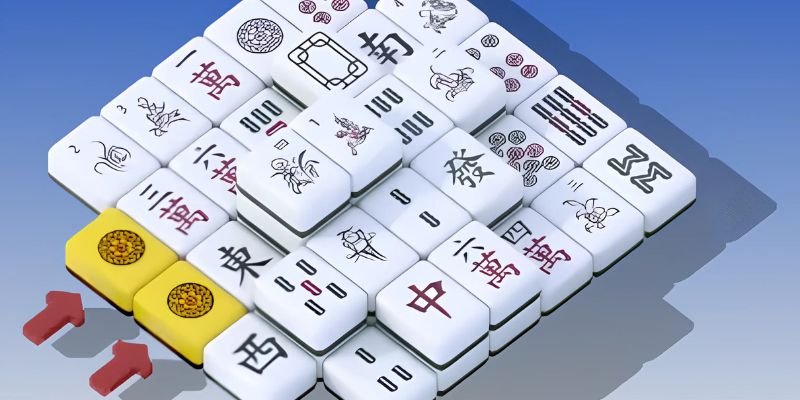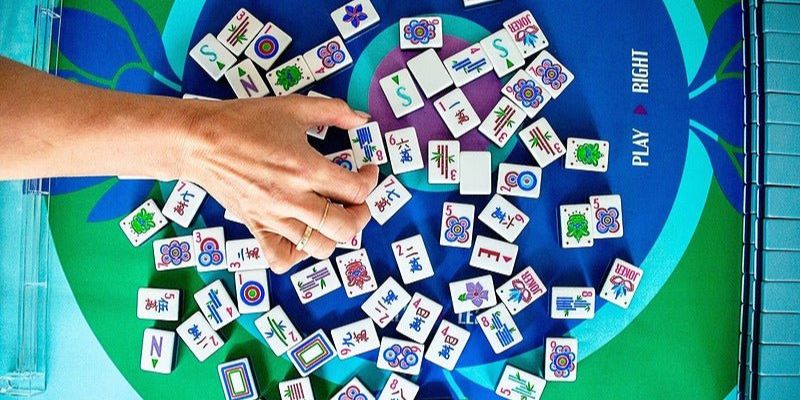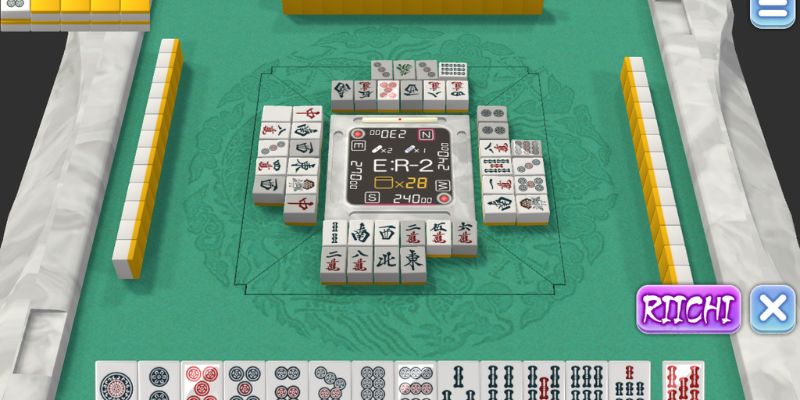Mahjong game rules are one of the unique cultural heritages of the East, loved and popular all over the world. Originating in China, this game has undergone many variations and refinements to suit each local culture, creating a richness and diversity that is difficult for players to ignore.
Introduction to Mahjong
Mahjong is a traditional Ph33 card games, originating in China around the 19th century. It is considered one of the most complex and attractive strategy games, requiring high concentration, precise calculation as well as flexible adaptability of the player.

Each version has its own rules, however, the basic principles remain the same. The main goal of the game is to form “sets” of cards (Pung, Chow, Kong) and “pairs” to complete a valid “hand”, called “Mahjong”. Players must constantly think, plan and adjust their tactics to achieve this goal before their opponents.
The complexity of mahjong ways 2 lies in the fact that, in addition to building and perfecting their own hand, players must also constantly monitor and predict the intentions of other opponents, in order to find opportunities to steal cards or prevent them from taking Mahjong. This requires players to have extremely sharp observation and judgment skills, as well as sharp strategic thinking.
Necessary equipment to play Mahjong
To be able to participate in the game, players need to prepare a standard set of equipment, including:
Card set
Mahjong card set consists of 144 cards, divided into the following types:
Suits:
- 36 circle cards: Includes 4 sets, each set has numbers from 1-9, represented by circle numbers.
- 36 Character cards: Consists of 4 sets, each set has numbers from 1-9, represented by Chinese characters.
- 36 Bamboo cards: Consists of 4 sets, each set has numbers from 1-9. The “1 Bamboo” card is usually represented by a sparrow.
Honor cards:
- 16 Wind cards: 4 East, West, South, North.
- 12 Dragon cards: 4 red dragons, 4 green dragons, and 4 white dragons. The white dragon can be a blank card or is symbolized by the letter “P”.
- Bonus cards (optional):
- 4 Flower cards: Usually Mai, Lan, Cuc, Truc, or other symbols.
- 4 Season cards: Represent Spring, Summer, Autumn, Winter.
- Dice: 2 dice are needed to decide the order of dealing. Traditional dice have the numbers 1 and 4 printed in red.
Other Accessories
Depending on the game version, players may need some additional accessories such as:
- Spare Cards
- Joker
- Card Holder
- Wind Counter
- Scoring Stick
How to arrange and start the game
Before starting, players need to take some preparation steps to set up the playing board and determine the order of the positions.
Steps to build the wall
- Shuffle all 144 cards.
- Each player takes 34 cards and arranges them into a wall of 2 rows, each row of 17 cards.
- The walls are arranged in a rectangular shape, with rounded corners.

Rules of the game
- Each player will pick up a Wind card to determine his position in the game.
- The player holding the East card will be the first player, and will be counted as double the points when you win Mahjong.
- The positions will be arranged clockwise: East – West – South – North.
- After determining the order of play, the East player will throw the dice to determine who will be the first to break the wall and start the game.
How to play and strategies in Mahjong
The main goal of this game is to form a valid “hand”, called a “Mahjong”. To achieve this, players need to master the basic card sets and build a flexible playing strategy.
Game Goals
Players have two main goals to complete a valid hand:
- Form a pair and 4 sets (Pung, Kong, Chow)
- Form a special hand
Basic Card Sets
To complete a hand, players need to create the following card sets:
- Pung (3 cards of the same type)
- Chow (3 cards of the same type, consecutively)
- Kong (4 cards of the same type)
- Pair (2 cards of the same type)
In addition, players also need to pay attention to other types of cards such as small cards, big cards and honor cards, to build an effective playing strategy.
Special Hands in Mahjong
In addition to the basic decks, the game also has many special hands that give higher scores when completed. Depending on the local version, these hands may vary.

Traditional Hands
Some traditional special hands in this game include:
- Buried Treasure
- Heads and Tails
- The Wriggling Snake
- All Chows
- Nine Gates …
These hands require players to have extremely sophisticated planning and calculation skills, to be able to complete them before their opponents.
Differences Between Local Versions
While the principles are the same, there are some notable differences between versions in different regions:
- Chinese versions: This is the most basic and traditional. It focuses more on skill and strategy than luck. The special hands are quite limited, allowing players to focus on arranging cards and calculating combinations to achieve “Mahjong.”
- British versions: The rules are a bit different. Players are only allowed to take one Chow per turn, which makes for a more thoughtful approach to play. It also has more special hands like “All Pair Honours,” “Fourfold Plenty,” and “Knitting,” which add excitement and challenge.
- American and Japanese versions: Both versions focus on special hands, with rules designed to be competitive. American typically requires players to have identical cards to win, while Japanese is a speed race where only the winner gets points.
How to Calculate Score in Mahjong
After completing a valid hand, players are awarded points based on factors such as the type of hand, special conditions, and their position in the game.

Basic Scores
The basic scores in this game include:
- Pung: 2 points
- Chow: 2 points
- Kong: 8 points
- Pair: 2 points
- Mahjong: 10 points (or 20 points in the English version)
Score-increasing factors
In addition to the basic scores, players can also receive additional points thanks to special factors such as:
- All cards of the same type: Double the points
- All large cards: Double the points
- Completing a special hand: Receive additional points depending on the type of hand
Players who win a game will receive money from other opponents, depending on the level of completion of their hand.
Some things to know when playing Mahjong
To become a Mahjong master, in addition to mastering the rules of the game, players need to note the following:
- Do not steal Kong if that Kong is not an exposed Kong and that card cannot form a game.
- Avoid using tactics that are too rough or lack sophistication, as they can be easily seen by opponents.
- Observe and judge the intentions of opponents sensitively.
- Flexibly adapt to situations, ready to change strategies when necessary.
- Accumulate experience through each game, learn from mistakes.
- Pay attention to local rules, as they may differ from the standard versions.
- With concentration, calculation and flexibility, players can gradually hone their skills, progressing to become a master in this field.
Conclusion
The above article has provided you with a comprehensive overview of the rules of Mahjong, from the necessary equipment, how to arrange and start the game, to the necessary strategies and skills. Hopefully, with this information, you will be able to confidently participate in exciting games and bring home proud victories.

